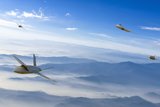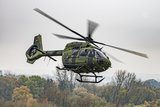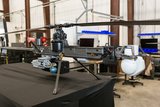How does China’s leadership view its fighter pilots?
One of the lessons most commonly lost on those who make procurement decisions is that the purchase of a weapon system that represents a leap in technological capability does not translate into some instant, magical uptick in combat power.
The quality of the operator, their training, the command environment and the degree to which the pilot, submarine captain or infantry officer has freedom to make their own decisions – all these factors make as much or more of a difference than the technology level of weaponry.
The People’s Liberation Army Air Force (PLAAF) is a perfect example of this truism.
Already have an account? Log in
Want to keep reading this article?
More from Air Warfare
-
![The future is here: Sixth-gen air dominance]()
The future is here: Sixth-gen air dominance
How RTX is equipping the military airspace – for today’s fleet and tomorrow’s fight.
-
![Will fresh FCAS talks resolve political turmoil?]()
Will fresh FCAS talks resolve political turmoil?
German, French and Spanish leadership set an end-of-year deadline to decide the fate of the Future Combat Air System programme which has struggled with a political stalemate for the latter half of 2025.
-
![Germany acquires additional 20 H145M helicopters]()
Germany acquires additional 20 H145M helicopters
The order for the extra helicopters comes from an agreement penned in December 2023, with the German Army receiving the bulk of the platforms.
-
![Anduril UK and GKN Aerospace collaborate on British Army ACP bid]()
Anduril UK and GKN Aerospace collaborate on British Army ACP bid
The pair will submit their demonstrator concept for Project Nyx, a development project for the British Army’s Land Autonomous Collaborative Platform.
-
![US Army command’s Picatinny CLIK common lethal drone interface makes progress]()
US Army command’s Picatinny CLIK common lethal drone interface makes progress
The Picatinny Common Lethality Integration Kit is designed to overcome the issue of unique integration methods between lethal payloads and drones as well as avoiding problematic acquisition conditions created by vendor lock.
-
![Australia invests extra A$1.4 billion in MQ-28A Ghost Bat after successful missile fire test]()
Australia invests extra A$1.4 billion in MQ-28A Ghost Bat after successful missile fire test
The investment includes new contracts for six MQ-28A Ghost Bat aircraft, as well as provisional funds to invest in the development of a Block 3 prototype.

























